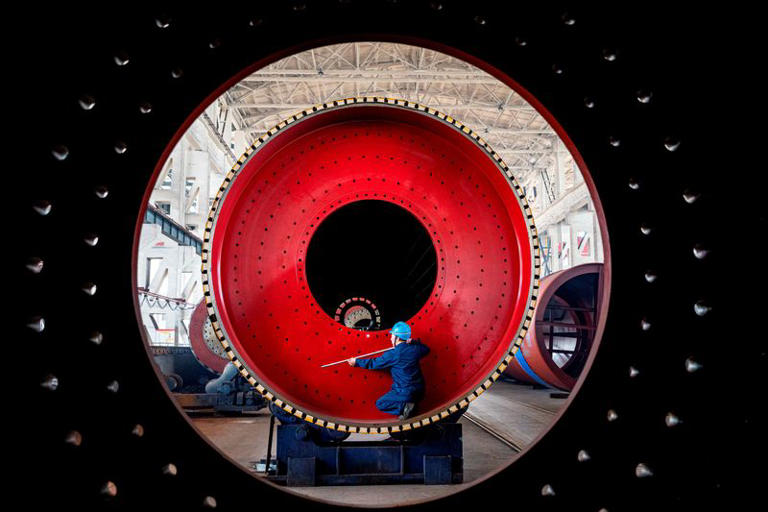In July, China’s manufacturing sector faced a significant downturn, reflecting a challenging economic environment. The National Bureau of Statistics (NBS) reported a decrease in the purchasing managers’ index (PMI) for manufacturing, which fell to 49.4 from 49.5 in June. This decline marks the third consecutive month of contraction, with the PMI remaining below the critical 50-point threshold that separates expansion from contraction in economic activity. Although the July figure slightly exceeded the median forecast of 49.3 from a Reuters poll, it underscores persistent difficulties within China’s industrial sector.
The PMI contraction indicates a broad-based slowdown in manufacturing activity, driven by several factors. Key among these is the reduction in new orders and new export orders, which have been contracting for three months. This ongoing decline highlights the struggles of Chinese manufacturers amid a combination of domestic and international pressures. Domestic demand has weakened significantly, reflecting a broader economic slowdown and reduced consumer spending. Additionally, external trade tensions have exacerbated the challenges faced by manufacturers, contributing to a tough operating environment.
Gary Ng, an assistant economist at Capital Economics, observed that the recent economic slowdown has prompted Chinese policymakers to consider more aggressive policy support measures. Ng suggested that this increased focus on policy intervention could help stimulate a recovery in manufacturing activity in the near term. However, the effectiveness of these measures will depend on their implementation and the broader economic context.
In response to the economic challenges, Chinese authorities have indicated plans to introduce additional stimulus measures aimed at boosting consumer spending. However, specific details about these measures remain vague. One component of the proposed stimulus includes a program of consumer trade-ins, which will be supported by part of the 300 billion yuan ($41.40 billion) in ultra-long treasury bonds announced recently. Despite this initiative, the allocated amount is considered relatively small compared to the scale of the economic challenges, representing just 0.12% of China’s economic output and 0.3% of 2023’s retail sales.
The decline in domestic consumption is closely linked to falling property values, which have adversely affected household wealth. With a significant portion of family assets invested in real estate, the sector’s downturn has had a substantial impact on overall economic sentiment. New home prices dropped at their fastest rate in nine years in June, and the PMI’s construction sub-index showed reduced activity in July, indicating diminishing demand in the property sector. This decline in real estate values has contributed to decreased consumer confidence and spending.
The official non-manufacturing PMI, which covers services and construction, also showed a slowdown, falling to 50.2 in July from 50.5 in June. This indicates that while there is some stability in the services and construction sectors, the overall economic environment remains challenging. Strong export performance has provided some support to manufacturing, but concerns about the sustainability of this boost remain. Weak external demand and a decline in import orders suggest difficulties in maintaining growth amid potential trade barriers.
Economists are divided on the extent to which policymakers will respond to these economic signals. Wang Tao, UBS’s chief China economist, anticipates that modest policy support will continue for the remainder of 2024. However, she does not foresee major new stimulus measures, indicating that the policy response will likely build on existing strategies rather than introducing significant changes. This cautious approach reflects the complexities of managing China’s current economic environment, which requires balancing short-term support with long-term structural adjustments.
In summary, the July PMI results reveal a manufacturing sector struggling with significant challenges, including weak domestic demand, declining property values, and external trade pressures. While increased policy support is expected, its effectiveness and timing will be crucial in shaping the trajectory of China’s economic recovery. The situation remains fluid, and the response from Chinese policymakers will be closely monitored to gauge how the economy might navigate these turbulent times and whether the anticipated policy measures can effectively stimulate growth.
